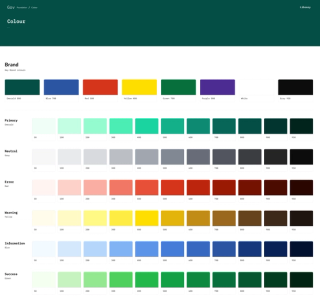How are leads actually generated? We’ve all asked ourselves this question, but fortunately for you, Kooba have answered it for a lot of clients. Through clever web design and thoughtful branding we have transformed sales pipelines, allowing for increased revenues and improved ROI for marketing teams. Lead generation might not always be easy, but accomplishing it always involves the same basic elements. Here’s Kooba’s guide to bringing in more business:
UX - Step One
It all comes back to the user experience. We’ve often made the argument that UX is the secret cog in the design machine that makes it all work. Of course, we can’t blame our partners for feeling less than excited about lifeless grey wireframes, but neither can we understate their importance. UX design serves to efficiently and directly connect site visitors with the information and tools needed to convert into leads. If every user can find the pages they need as quickly as possible, we can minimise lost business and revenue, and convert every interested customer into a valuable lead.
A lot of work goes into making an effortless user experience (UX). At Kooba, we begin every project with a UX discovery and research process, and refer back to it at every stage of design and development. We also integrate our clients into our UX analysis, making use of their expertise through card sorting workshops and testing sessions. Data analysis also plays a key role. Our research team begins their work with an in-depth audit of the existing client site, finding inefficiencies that can be improved to increase traffic and conversions. Following the site launch, we then return to audit our own work, constantly seeking to improve the flow of visitors into actionable leads.
All Action
Lead generation is enabled by a smooth and efficient UX, but it ultimately relies on converting users at key points. Central to accomplishing this is the strategic placement of calls to action (CTAs). These elements seek to push your user towards a certain action, for instance signing up for a trial, buying a product, or submitting their contact details. The exact nature and appearance of your CTAs will depend on your specific sales pipeline, but they will always play a role in pushing customers away from browsing and into converting.
CTAs aren’t a magic bullet. Pushing a user too quickly or too persistently can backfire and cause frustration. A good UX design will make sure your audience is targeted exactly when and where they are most likely to convert, not a second too early or too late. This results in a high conversion rate on key pages, generally tracked by the number of users clicking on your CTA. Of course, this can be tweaked and improved in various ways, in particular by A/B testing a variety of CTAs to discover the option that maximises conversions (and hence leads).
Measure What Matters
Web designers measure a lot of variables, but it’s important to stay focused on those that actually make a difference to your business. Of course, the obvious one here is leads generated, which we can measure from form submissions, signups, purchases, or whatever other key action is most relevant to your business. If a site can accomplish this, nothing else really matters. That’s not to say there’s no other relevant metrics. Measuring how users progress towards conversions can give an indication of the roadblocks they may face on the way. This means tracking how long they spend on crucial pages, which pages they exit prematurely, and what pathways of activity lead to conversions versus lost customers.
By gathering and analysing this wider range of data we can go beyond asking “is it working?” and start focusing on why a website is or isn’t generating leads. This reveals not only the mechanics of the site itself, but also the deeper patterns of your customers’ behaviour. If users tend to convert more after seeing your product page, for instance, this can indicate the persuasive value of customers seeing your product and features. These insights can carry beyond your website, and inform your wider sales and marketing strategies.
Remember the Bigger Picture
As much as we like to obsess over lead generation, it’s always important to consider the broader context that it exists in. There’s no reason that an efficient conversion strategy cannot co-exist with effective brand messaging and thoughtful user engagement. In fact, the best lead acquisition pipelines are directly integrated with these factors. Not every site visitor can be converted immediately, but by encountering engaging content and an appealing brand they are incentivised to return and convert in the future. Keep in mind that for most companies, roughly 5% of their target audience are actually in the market, with 95% only available at some point in the future.* Aggressively targeting the 5% is crucial, but it shouldn’t come at the expense of the broader promotion of your product and brand to a much wider pool of potential future customers. This is where an enjoyable and convenient website experience can deliver sustainable long-term benefits, and maximise leads across a wider time horizon.
Lead Generation 101
Bringing in more leads with your website is not easy, but neither is it complicated. As Kooba have learned over the years, following these basic principles can consistently deliver results:
- Focus on the UX of your website and remove the roadblocks that are preventing conversions.
- Use CTAs strategically to generate conversions at the right moments. Rely on data, not guesswork, to see what brings in the best results.
- Remember the long-term strategy that your lead-generation targets exist within. Target not only current buyers, but also future customers who aren’t currently in the market.
If it seems a bit simple, that's because it is! What’s complicated is tailoring these principles to your specific conditions. No two firms are the same, and it's important to take a unique approach to each one. Kooba won’t pretend to have a secret formula to your specific needs, but we can guarantee an attentive and collaborative approach that will allow us to learn from your expertise, and deliver on the metrics that matter most to you.
* The 5% rule is only a rule of thumb, calculate your own figure here









